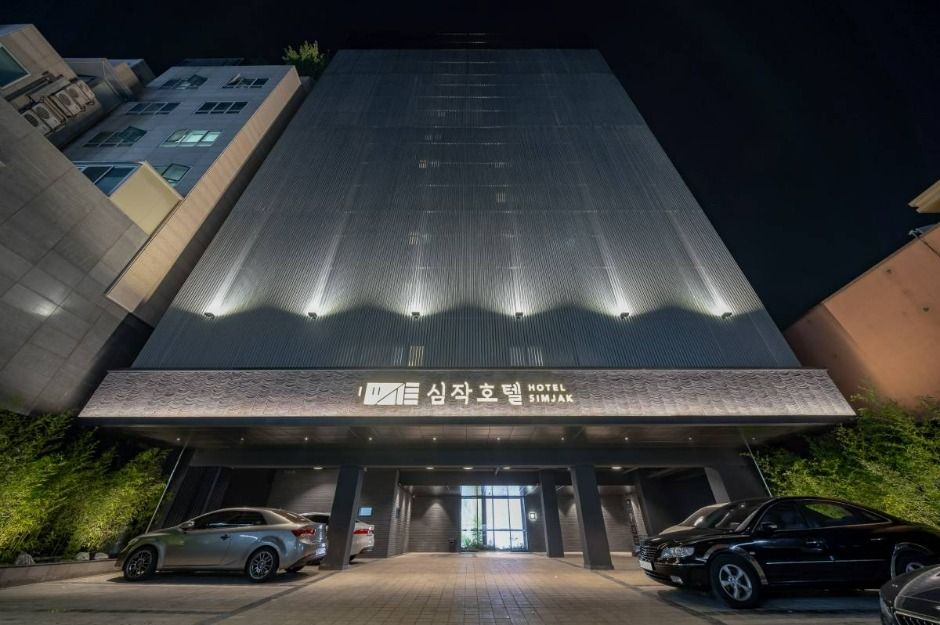Tag Heuer [Tax Refund Shop] (태그호이어)
9.1Km 2024-04-23
536, Poeun-daero, Suji-gu, Yongin-si, Gyeonggi-do
-
Cartier [Tax Refund Shop] (까르띠에)
9.1Km 2024-04-19
536, Poeun-daero, Suji-gu, Yongin-si, Gyeonggi-do
-
Muji - AK & Giheung Branch [Tax Refund Shop] (MUJI AK&기흥)
9.1Km 2024-04-19
2F, 63, Giheungyeok-ro, Giheung-gu, Yongin-si, Gyeonggi-do
-
E-Mart - Jukjeon Branch [Tax Refund Shop] (이마트 죽전)
9.2Km 2024-04-22
552, Poeun-daero, Suji-gu, Yongin-si, Gyeonggi-do
-
Old House of Chang Ucchin (장욱진고택)
9.2Km 2024-09-19
119-8 Mabuk-ro, Giheung-gu, Yongin-si, Gyeonggi-do
The Old House of Chang Ucchin was the home of the famous Korean artist, one of the first to paint in the Western style in Korea. Chang created many works of art while living here from 1986 until his death. The house was registered as a National Cultural Heritage in 2008, and features a traditional house built over 120 years ago, as well as a Western-style building added on later, based on his 1953 painting "Scene with a Car." Visitors can see the red brick walls, black roof, and main entrance flanked by windows just like in the painting. The small hanok building is built in a square shape, with an anchae (inner room) and sarangchang (guestroom/study). The annex building is now used as a traditional tea house and gift shop.
Korean Folk Village - Yongin Branch [Tax Refund Shop] (한국민속촌 용인)
9.2Km 2024-04-19
90, Minsokchon-ro, Giheung-gu, Yongin-si, Gyeonggi-do
-
The Handsome Fashion Warehouse [Tax Refund Shop] (한섬 패션웨어하우스)
9.4Km 2024-04-19
186, Gongse-ro, Giheung-gu, Yongin-si, Gyeonggi-do
-
Simjak Hotel Dongtan (더휴식 심작호텔 동탄점)
9.4Km 2025-05-02
31-15 Keunjaebong-gil, Hwaseong-si, Gyeonggi-do
Simjak Hotel Dongtan is a self-check-in hotel for those who seek ultimate rejuvenation for their soul and body. The hotel's name "Simjak" means "to build a mind," and is often mentioned in the historical records that date back to the Goryeo dynasty. The hotel offers a variety of rooms dedicated to relieving stress and providing entertainment.
E-Mart Traders - Gunpo Branch [Tax Refund Shop] (이마트트레이더스 군포)
9.4Km 2024-04-22
74, Samseong-ro, Gunpo-si, Gyeonggi-do
-
Olive Young - Homeplus Byeongjeom Branch [Tax Refund Shop] (올리브영 홈플러스병점점)
9.5Km 2024-06-27
1F, 985, Gyeonggi-daero, Hwaseong-si, Gyeonggi-do
-
![Tag Heuer [Tax Refund Shop] (태그호이어)](http://tong.visitkorea.or.kr/cms/resource/15/2882215_image2_1.jpg)
![Cartier [Tax Refund Shop] (까르띠에)](http://tong.visitkorea.or.kr/cms/resource/17/2882217_image2_1.jpg)
![Muji - AK & Giheung Branch [Tax Refund Shop] (MUJI AK&기흥)](http://tong.visitkorea.or.kr/cms/resource/97/2888297_image2_1.jpg)

![Korean Folk Village - Yongin Branch [Tax Refund Shop] (한국민속촌 용인)](http://tong.visitkorea.or.kr/cms/resource/52/2888752_image2_1.jpg)
![The Handsome Fashion Warehouse [Tax Refund Shop] (한섬 패션웨어하우스)](http://tong.visitkorea.or.kr/cms/resource/02/2890402_image2_1.jpg)

 English
English
 한국어
한국어 日本語
日本語 中文(简体)
中文(简体) Deutsch
Deutsch Français
Français Español
Español Русский
Русский